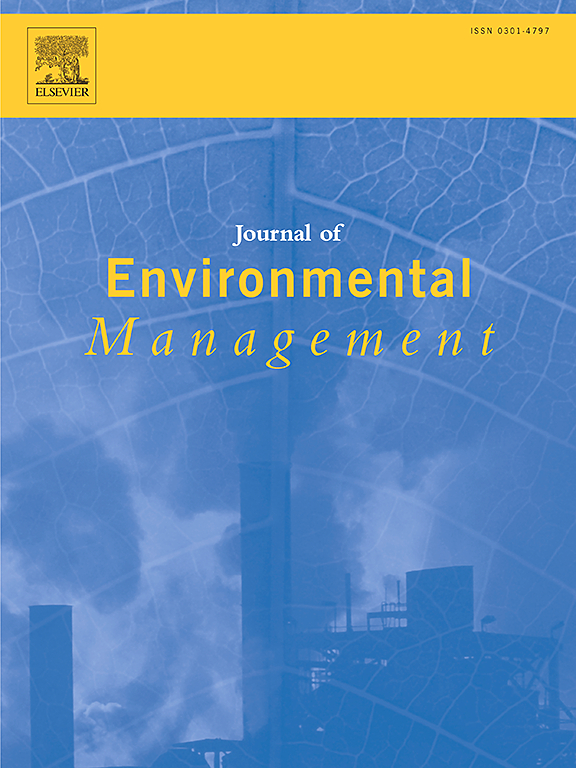利用基于个体的森林模型和三维辐射传递模型模拟的 ALS 点云评估各大洲森林地上生物量估算模型
IF 8
2区 环境科学与生态学
Q1 ENVIRONMENTAL SCIENCES
引用次数: 0
摘要
基于面积的方法(ABA)已被广泛用于利用机载激光扫描(ALS)数据估算森林地上生物量(AGB)。然而,由于模型在不同森林类型和地区的通用性面临挑战,其可扩展性受到限制。从 ALS 数据中选择敏感变量对于构建稳健的森林 AGB 估算模型至关重要,但这种选择在不同森林类型和地区之间存在很大差异。传统上,评估变量选择的影响因缺乏准确的参考森林 AGB 值而受到阻碍。基于计算机模拟的方法为探索这些难题提供了一个视角。本研究采用了基于个体的森林生长过程模型 FORMIND 和三维辐射传递模型 LESS,以评估基于 ABA 的森林 AGB 估算模型的可移植性和 ALS 衍生变量的通用性。我们使用六个虚拟三维森林场景和两个真实世界的森林地点(代表了一系列全球森林类型)及其模拟 ALS 数据,利用随机森林算法开发了一个森林 AGB 估算模型,从而分析了各种变量的重要性。我们通过交叉比较评估了模型的可移植性。此外,我们还利用从两个不同地区收集的野外地块和 ALS 数据对模型进行了验证。结果表明,使用α-形算法提取的冠层表面积和体积以及根据威布尔分布拟合的参数是跨森林类型和地区使用 ALS 估算森林 AGB 的重要变量。将这些变量纳入模型可显著提高森林 AGB 估测的准确性。优化模型的 R2 为 0.945,RMSE 为 34.22 吨/公顷,MAE 为 20.53 吨/公顷。我们的研究不仅加深了对森林垂直结构指标与 AGB 之间关系的理解,而且突出了计算机模拟作为完善森林结构参数估计工具的潜力。本文章由计算机程序翻译,如有差异,请以英文原文为准。
Evaluating forest aboveground biomass estimation model using simulated ALS point cloud from an individual-based forest model and 3D radiative transfer model across continents
Area-based approach (ABA) has been widely employed for estimating forest aboveground biomass (AGB) using airborne laser scanning (ALS) data. However, its scalability is limited due to challenges in model generalization across different forest types and regions. The selection of sensitive variables from ALS data is crucial for constructing robust forest AGB estimation models, yet this selection varies significantly among forest types and regions. Traditionally, assessing the influence of variable selection is hindered by the lack of accurate reference forest AGB values. Computer simulation-based method provides a perspective for exploring these challenges. This study employs an individual-based forest growth process model, FORMIND, coupled with a 3D radiative transfer model (RTM), LESS, to evaluate the transferability of ABA-based forest AGB estimation models and the generalization of ALS-derived variables. We used six virtual 3D forest scenes and two real-world forest sites, representing a range of global forest types, along with their simulated ALS data, to develop a forest AGB estimation model using the random forest algorithm, which allowed us to analyze the importance of various variables. We assessed model transferability through cross-comparison. Additionally, we validated the model using field plots and ALS data collected from two distinct regions. The results showed that the canopy surface area and volume extracted using the α-shape algorithm and parameters fitted from the Weibull distribution are vital variables when using ALS for forest AGB estimation across forest types and regions. Incorporating these variables into the model significantly improves the accuracy of forest AGB estimation. The optimized model achieved a R2 of 0.945, a RMSE of 34.22 t/ha, and a MAE of 20.53 t/ha. Our study not only deepens the understanding of the relationship between forest vertical structural metrics and AGB but also highlights the potential of computer simulation as a tool for refining the estimation of forest structural parameters.
求助全文
通过发布文献求助,成功后即可免费获取论文全文。
去求助
来源期刊

Journal of Environmental Management
环境科学-环境科学
CiteScore
13.70
自引率
5.70%
发文量
2477
审稿时长
84 days
期刊介绍:
The Journal of Environmental Management is a journal for the publication of peer reviewed, original research for all aspects of management and the managed use of the environment, both natural and man-made.Critical review articles are also welcome; submission of these is strongly encouraged.
 求助内容:
求助内容: 应助结果提醒方式:
应助结果提醒方式:


